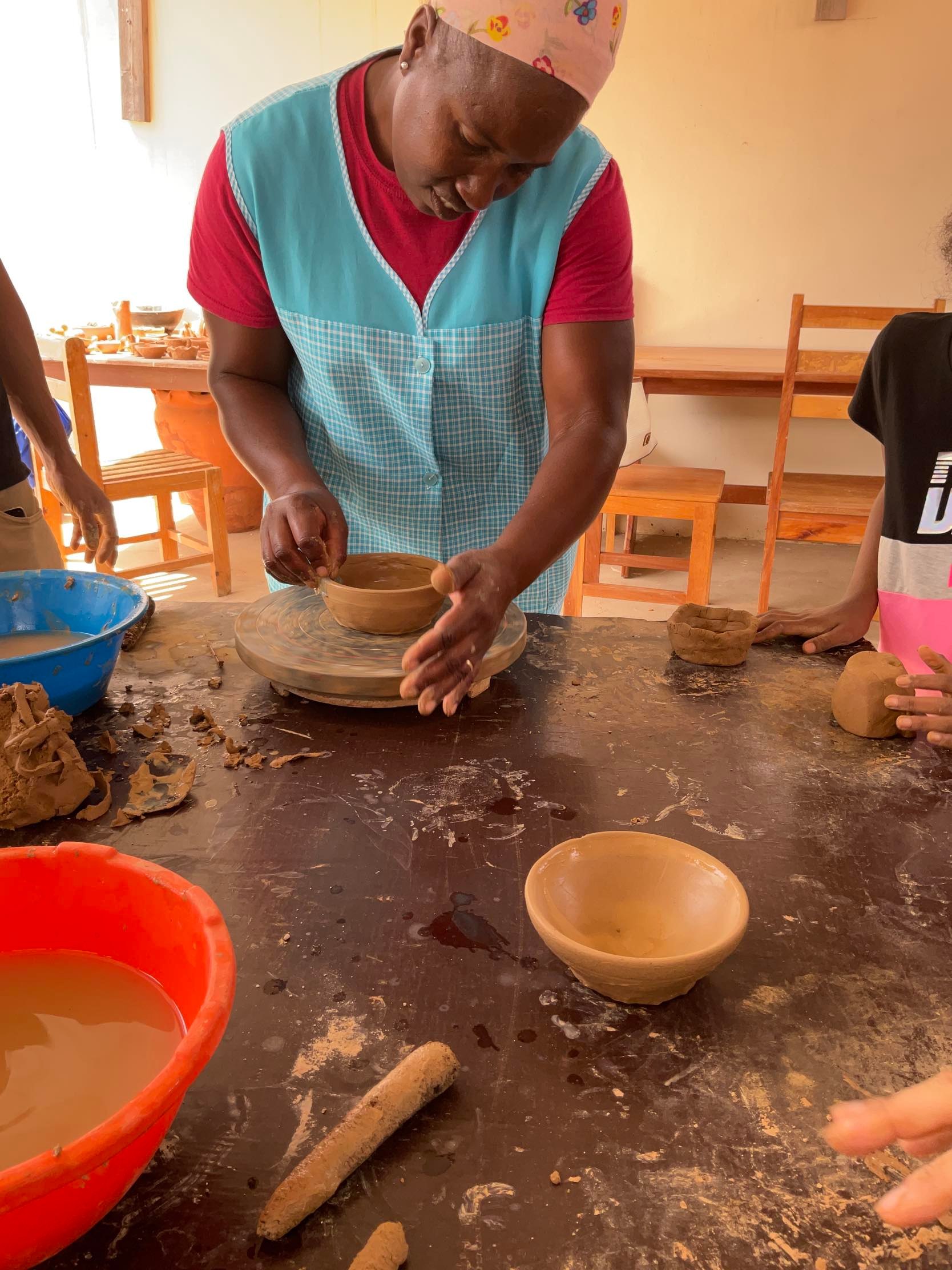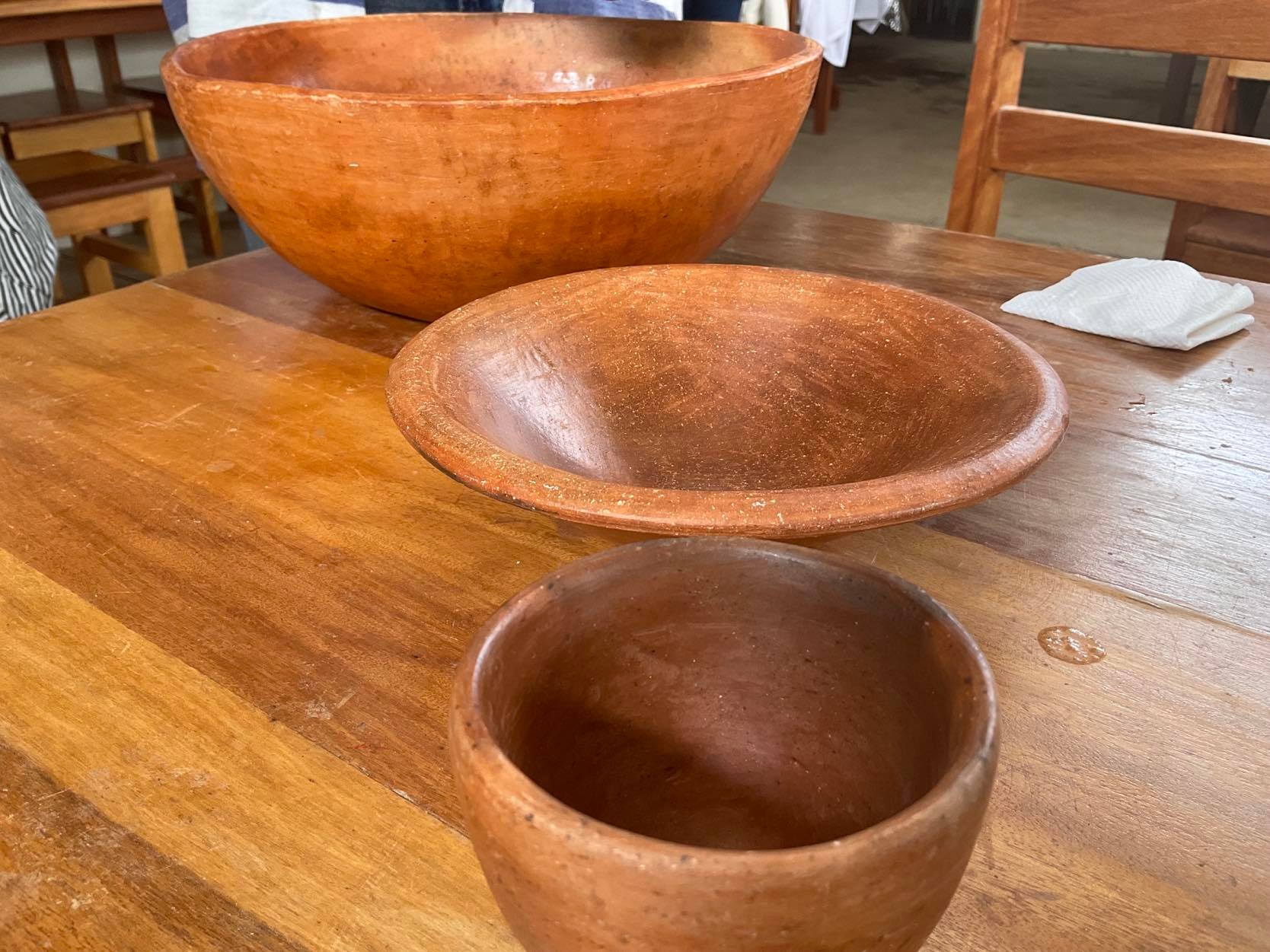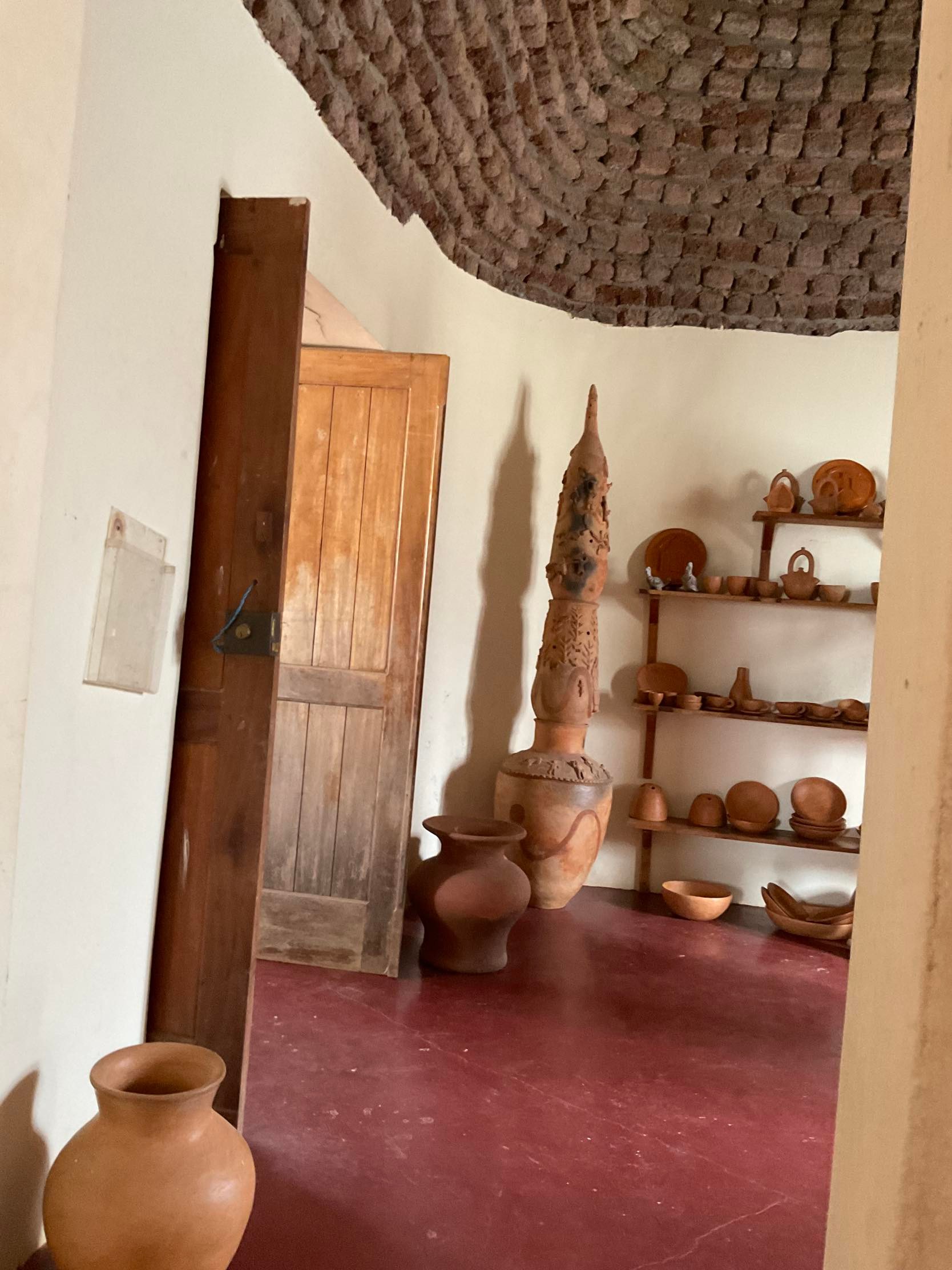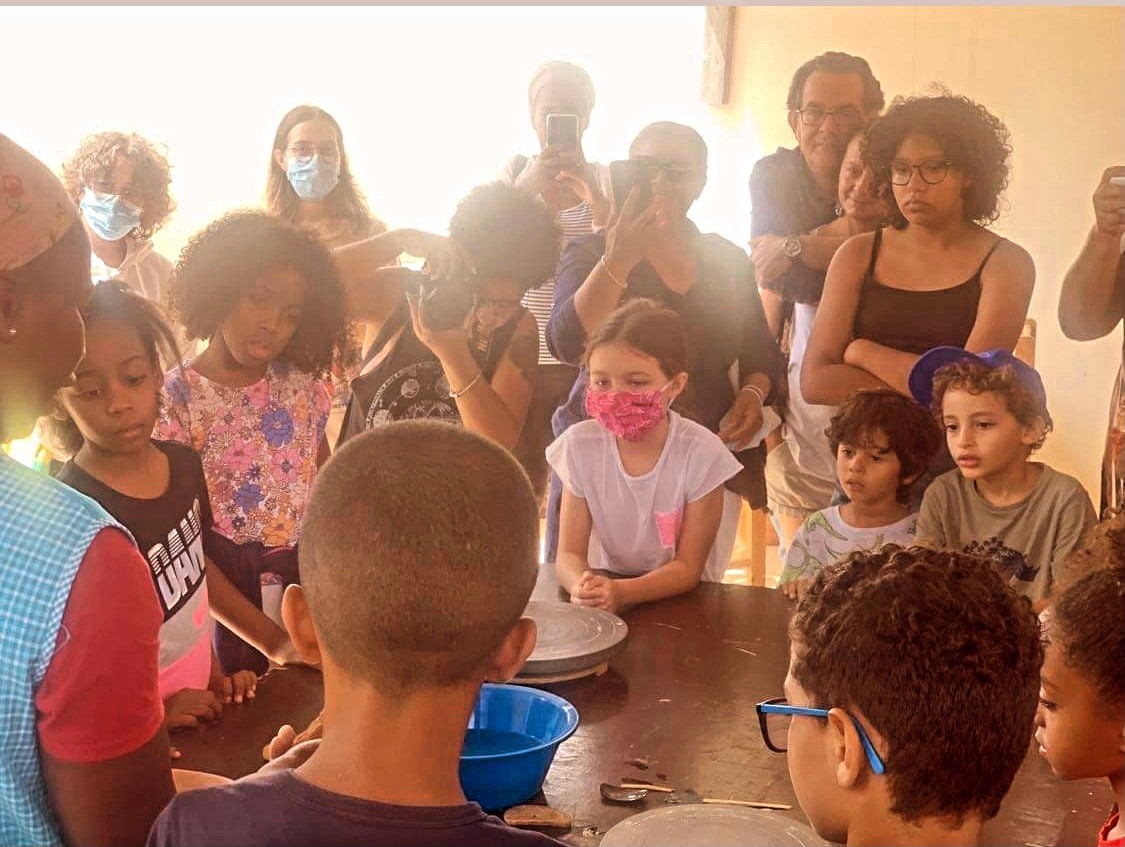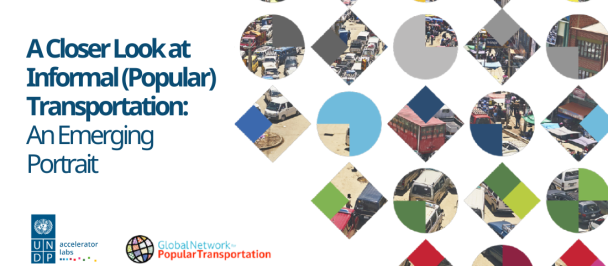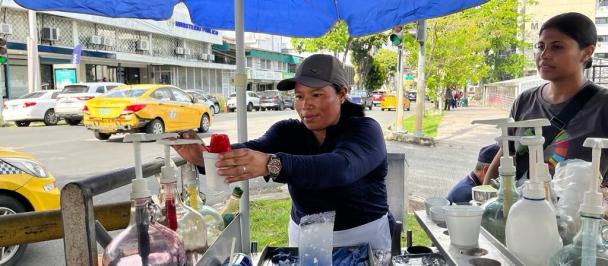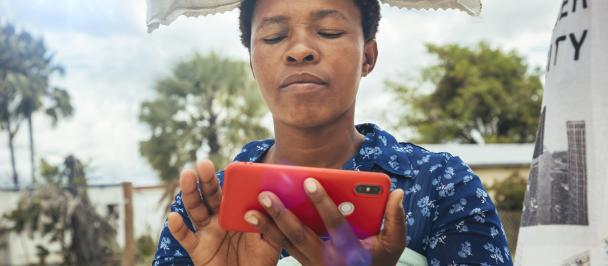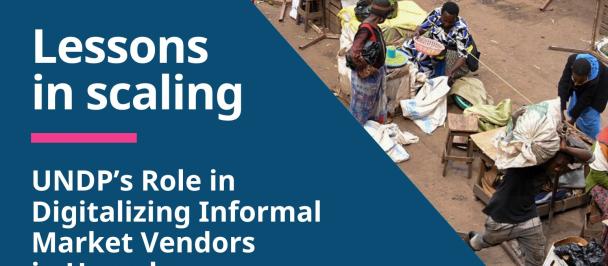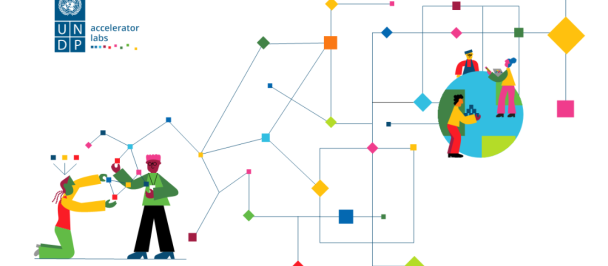Small Business on Social Media era: Clay Solution
Small Business on Social Media era: Clay Solution
March 22, 2022
In a workshop creating objects with Clay ©SamoryAraujo/UNDPCaboVerdeAcceleratorLab
A Casa das Cinco Mulheres: The Solution that came from the clay
The traditional pottery had in Cape Verde and in the rural community’s production centers a decisive role in the empowerment of the women, holders of the ancestral know-how of making clay dishes.
This tradition is developed in the family environment and the techniques are transmitted from generation to generation, and this knowledge is dominated by women. It is a seasonal activity, complementary to the main economic activities of the community and dependent on the market factor, so with the entry of new products in the national market, the objects have gained new functions. Despite a growing disinterest on the part of young people in this tradition, a willingness to preserve it prevails.
Ethnography
“A Casa das Cinco Mulheres” created in 2016 is currently formed by five members, of various age groups and older women with more experiences who are passing their knowledge to the younger ones, to ensure that the tradition does not disappear. It is a reference in the production of traditional and contemporary ceramic pieces, ensuring means of survival for many women heads of family in this locality of Northern Santiago. The aim of the cooperative is now to conquer new markets. Located in the northern part of the Island of Santiago, the Municipality of Tarrafal is covered by the humid winds of the Northeast. However, the characteristics marked by a slightly accentuated relief makes it one of the most arid municipalities of the island where it is inserted.
Tarrafal, the northernmost municipality on the island of Santiago, survives based on agricultural activities and remittances of emigrants, who play an extremely important role in the day-to-day life of the local population. Fishing is also another strong indicator of the survival of local families, with a considerable number of men living in this activity and women living off the sale of fish.
To speak of the Municipality of Tarrafal, emphasizing above all its historical dimension, implies, first, to know the route of the Salazar regime, which, in the opinion of the majority, sent a human mass to the Concentration Camp of Tarrafal for considering it the most inhospitable places in Cape Verde. Today, transformed into a Museum of Resistance, the building that housed the out ground holds the tragic memory of the struggle against fascism.
The Municipality of Tarrafal, like the other parts of Cabo Verde, experienced a sharp growth during the 1990s, extending into the new century. The emergence of new neighborhoods, the movement of the rural exodus and the movements of citizens between the diaspora and the county have been challenges for Tarrafal. Hence the need to find adequate answers to the problems that arise. One of them involves the promotion of knowledge. This is because education, culture and knowledge are the great keys to unbridle the development of the bonds of poverty.
Sample of clay dishes ©SamoryAraujo/UNDPCaboVerdeAcceleratorLab
The solution
And in this picture comes the solution of clay, in a municipality and in a community (Trás-os Montes) where the rural exodus arises, and tourism is a great challenge. In rural areas, where there are less refrigerators as in the urban area, ceramic utensils remain the most convenient for the conservation of fresh water. Its social value is notorious since its manufacturing space, where it is verified, the artists made possible mainly by group work and by the known system of "djunta mó", a practice that brings together the neighboring elms and the families. Which would contribute so much to improving socio-economic conditions of the pottery families, as would another dynamic to the process of development of the interior of Santiago.
The recovery of the production and marketing of objects that are no longer produced is desirable but does not constitute an easy task since from the utilitarian point of view have been overtaken by industrial products. Meanwhile, it is possible to "resurrect" them through the dissemination and cultural appreciation of them.
Learning cycle (sense, explore, test, and grow) – Clay business on social media era
The exhibition hall ©SamoryAraujo/UNDPCaboVerdeAcceleratorLab
SENSE
A solution mapping field visit was organized to the island of Santiago northeast area, with an objective of finding creative solutions on culture; we took note of this group of five women from Tarrafal and their work on clay. Brainstorming with group of women from the capital we learned about the “Casa das Cincos Mulheres” and their marketing needs for the commercialization of the products. This group, when visiting for the first time the home of the five women, found there an urgent need for better communication and/or marketing for a widening of the market.
EXPLORE to better communicate
This group of women from a civil society with different background and expertise, when visiting for the first time “A casa das Cinco Mulheres”, found there an urgent need for communication to achieve the market and future clients; so, they quickly stablish a plan and explore which social media platform should be use:
- First thing was a need to establish in which social media platform(s) they should use, because in reality – they don’t need them all. (For example, there’s no point in advertising hearing aids on Snapchat, because the likelihood of their target demographic being on that messaging app is slim compared to the likes of Facebook or WhatsApp). When was established the target market, and the best platform to engage with (Facebook, Messenger, WhatsApp) they start to create content and activities to be share, like small communications of the weekend visit for workshop: a transference of knowledge and practice on how to build from the clay
- Aside from figuring out their client demographic, and platform, there is a need to understand that on how to succeed on social media; for that they start to post great content or engage with public figures (as an example : The First Lady of Cabo Verde had a visit and participate on one of the Workshop: how to build from the Clay; Angel Brito a famous stylist and designer, she is the mentor of the pottery visit project.
Workshop in action ©SamoryAraujo/UNDPCaboVerdeAcceleratorLab
Test
And for this began the organization of small, organized visits from the capital to the Trás-os-Monte, where at a symbolic price they offer: Workshop for children and adults, on how to build from the clay: all the steps include, and a traditional plat for all. After a two month (weekly experience) these solutions brought a big success to the “Casa das Cinco Mulheres”, with a huge engagement from the civil society.
The highlight of these workshop and guide visit experience has been so far from the visit of the first Lady of Angola promoted by the First Lady of Cabo Verde, which led to a great visibility to the Casa das Cinco Mulheres on TV, Radio, online newspapers. In addition to visibility, we have the economic aspect: for a small community with low incomes, all this visibility translates into more visits, more sales and with this more income.
Conclusion
It’s important to see people come together and help a small business to grow and we can emphasize the importance of the communities on social media. The community want to reach out when their learn about the struggles the small entrepreneur faces; its mean, people want to support small business when they know the story behind and especially when they are aware of the challenges they go through. It´s also important to have a strong communication strategic plan on how to reach people and how to engage them. The time is now in a era that we all are connected through a wireless reality.

 Locations
Locations